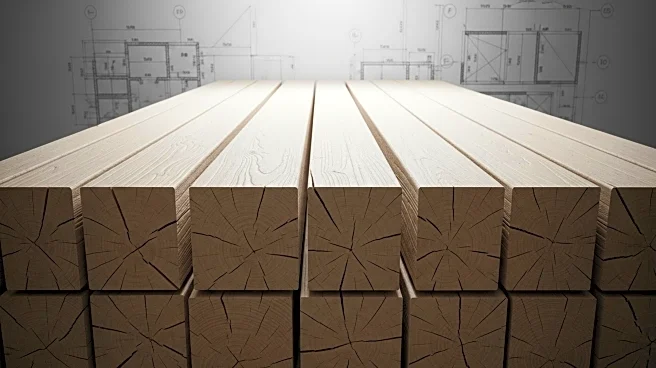What's Happening?
Mass timber is gaining popularity in construction due to its environmental benefits and efficiency. However, concerns about its fire safety have prompted industry experts to recommend early involvement of fire engineers in project planning. Mass timber, particularly cross-laminated timber (CLT), forms a protective char layer when exposed to fire, preserving structural integrity. This behavior contrasts with steel and concrete, which can lose strength or spall under high temperatures. Recent fire tests have shown that mass timber can achieve fire ratings comparable to traditional materials, with structures remaining intact after severe fires. Building codes in the U.S. and Canada have adapted to include provisions for tall timber buildings, reflecting confidence in mass timber's fire performance.
Why It's Important?
The adoption of mass timber in construction has significant implications for the industry, offering a sustainable alternative to steel and concrete. Its ability to store carbon makes it attractive for developers aiming to meet environmental targets. The fire safety of mass timber is crucial for gaining acceptance among insurers and regulators, which can influence construction costs and project feasibility. As more data on fire performance becomes available, insurance premiums for mass timber projects are expected to align with those for traditional materials, potentially reducing financial barriers. The industry's growth could lead to increased economic opportunities, particularly in regions with strong forestry sectors.
What's Next?
Further research is needed to refine fire safety standards for mass timber, including the safe limits of exposed timber and connection performance in seismic designs. The development of a national database of fire incidents and test results could accelerate acceptance and reduce uncertainty. As insurers gain confidence in mass timber's fire safety, construction phase controls and transparent engagement with insurers will be crucial for achieving cost parity with steel and concrete. The continued scaling of mass timber projects and sharing of data will be essential for its integration into mainstream construction practices.
Beyond the Headlines
The shift towards mass timber construction represents a broader trend in the industry towards sustainable building practices. Its adoption could lead to long-term changes in construction norms, emphasizing environmental responsibility and innovative design solutions. The collaboration between regulators, insurers, and developers will be key in overcoming existing barriers and ensuring mass timber's place in the future of construction.












